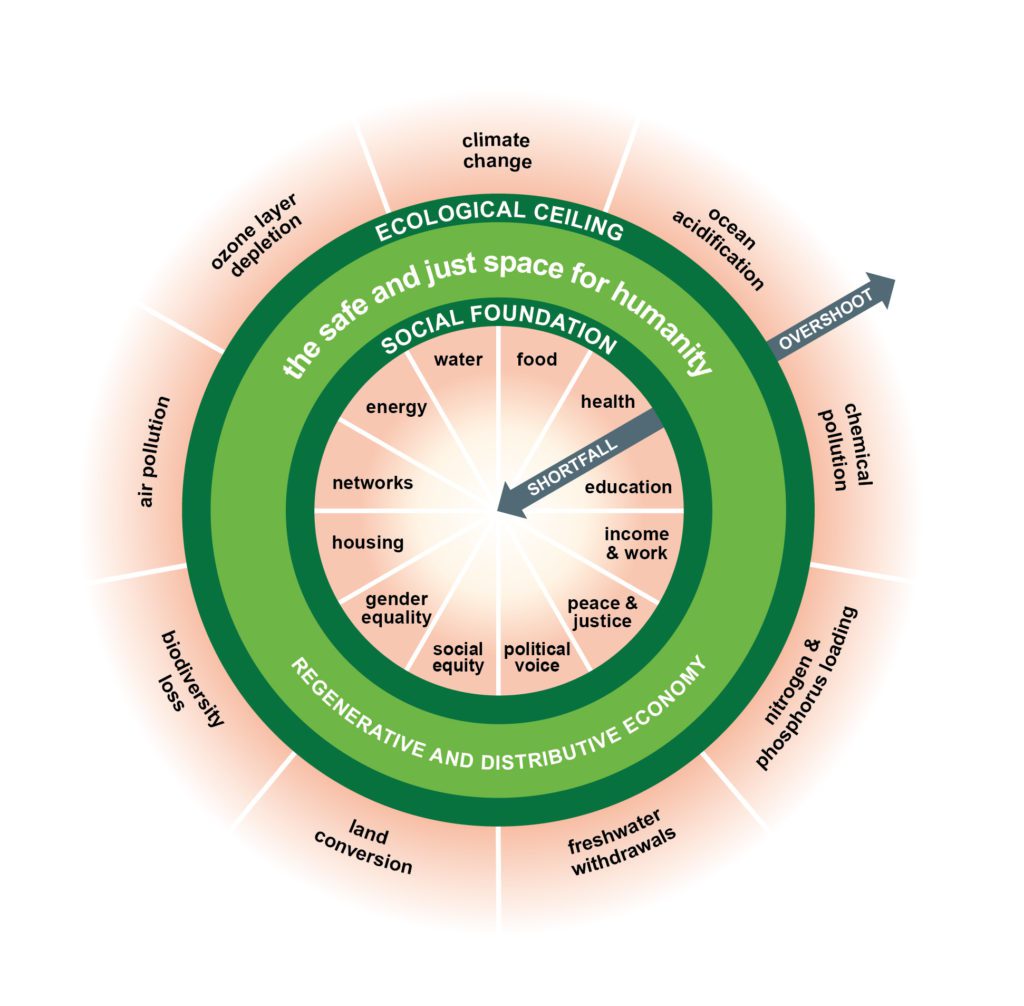Economics of Unlimited Growth
If you’ve ever taken a high school economics class, you know that the essential visual tool of the economist is a line graph. Supply and demand curves, inflation curves, GDP curves, basically all of the significant ideas of economics can be visually demonstrated on an x and y-axis. And for all of them, the goal is for them to go up and the right, forever.
One of the underlying assumptions of economics is that growth, if appropriately managed, can go on forever. More and more money, more and more products, more and more consumers, our growth is only limited by our own human failures.
But, of course, that can’t be true. We can’t keep producing and consuming more and more bananas ad infinitum. Why? Well, at some point, we would simply run out of space, water, and sunlight to grow bananas. The same is true for any other production graph. The illusion of an x and y axis that extends indefinitely is just that, an illusion. There are limits to what we can and should extract, produce, consume, and discard.
I once worked at a church with a fast-growing contemporary service. The service had doubled in size in just a year. As some of the leaders talked about maintaining the momentum, I joked that we couldn’t maintain that growth curve for too long. Anyone who has spent any time looking at an exponential growth curve knows that, before you know it, even if you overcome the limits of physical space and interpersonal connection, you would simply run out of people.
But in economics, as in church growth, there is often little acknowledgment of the reality of the boundaries on a growth curve. Nothing grows forever, and it shouldn’t. There are literal physical limitations that stop all growth at some point and plenty of other limitations that quell or slow it long before that point.
So how do we ensure excellence, hard work, and appropriate desire to fulfill our calling while recognizing our finitude as humans, leaders, and small pieces of a much larger system?
Doughnut Economics
Kate Raworth is an Oxford economist who proposes the idea of “Doughnut Economics.” Doughnut economics suggests that, instead of thinking of economic success as an ever upward-and-to-the-right line, we consider it a doughnut. In the hole of the doughnut is the minimum human needs of human flourishing, the minimum standards of things like food security and health to ensure that everyone has enough to escape poverty. Once over each of those basic needs, you are in the doughnut zone, where humans can prosper. However, if growth continues too far out, it hits the outside of the doughnut, where the planet’s capacity to sustain this growth level is superseded. The space outside the doughnut is delineated by things like fresh water usage, chemical pollution, and climate change.

Her thesis is that human flourishing doesn’t exist in perpetual growth but in societies that can function inside the “sweet spot” of the doughnut, the band where people’s minimum needs are met but in which the planet can sustain itself.
What could this idea teach us about how to lead well? What would living in the doughnut look like for us as we try to innovate, push, and grow our communities while respecting the finitude of ourselves, our communities, and the demands on our resources?
Finding Your Sweet Spot
Take a moment and consider Raworth’s graph. What are the minimum standards that your community needs to meet? For churches, this can look like pastoral care, Sunday morning worship, meaningful opportunities for connection, local missions, and more. List out some of your minimum standards.
Now consider what the outer limits of your donut might be. Very few of our communities will ever grow large enough to impact things like ocean acidification, but what about burnout? What about time with your family? What about your volunteers’ longevity or your community’s financial strain? Take some time to list out what those outer boundaries might look like.
In Raworth’s analysis, no states sat in the doughnut zone in all possible categories, and your community likely doesn’t either. Take some time to consider where you might fall short on the basics and where you might be overextending yourself.
What changes could you make to bring your community closer to that sweet spot? What spiritual disciplines of patience and restraint, combined with focus and hard work, do you need to cultivate to lead your community there?
Remember that our call as Christians is to live in life-giving community with all of creation, and sometimes that means a more delicate balancing act than our cultural pursuit of more, more, more. If you get discouraged, just remember that churches love doughnuts, and you’re bound to have a couple dozen fried pieces of inspiration in the fellowship hall come Sunday.




0 Comments